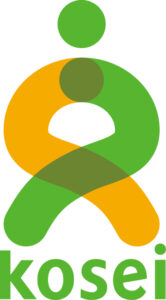Home
Pali texts
The corpus of texts, documents, and inscriptions in the Pali language is vast, having functioned as the primary, or one of the primary vehicles for the ideas, memories, hopes, and literary cultural expressions of Buddhist, particularly Theravāda, communities in parts of South and Southeast Asia for some two and a half thousand years.
The Pali canon (Tipiṭaka) itself is unique in that it is the only complete canon of the early Buddhist schools to have survived in an early Indian language, that has been uninterruptedly transmitted to the present day by communities of practitioners and is augmented by a large body of secondary literature which records how the communities that transmitted it understood and regarded the texts. Although we do have portions of the parallel canonical literature of several other Buddhist schools preserved in languages as diverse as Sanskrit or Buddhist Sanskrit, Gandhari, Chinese, and Tibetan, they are but a fraction of the original corpus produced and transmitted by those communities, with many examples, such as those in the Gandhari and Sanskrit languages, being fragmentary. As such, the Pali Tipiṭaka is an immensely important source for understanding the teachings attributed to the Buddha and his monastics by subsequent generations, as well as representing an important source for our understanding of ancient India.
But the Pali canon is but a fraction of the ocean of literature recorded in Pali, with some texts being better known and more frequently used by Buddhist communities than those of the Tipiṭaka, such as the Visuddhimagga or Jātakas. Pali literature includes the very extensive commentaries (aṭṭhakathā) and sub-commentaries (ṭīkā); works that closely reference the canonical texts, such as the Milindapañha, Peṭakopadesa, and Nettippakaraṇa; or assist a student in their study of a subject, namely handbooks such as the Vinayavinicchaya and Abhidhammasaṅgaha; chronicles, such as the Dīpavaṃsa, Mahāvaṃsa, Thūpavaṃsa, and Samantakūṭavaṇṇana; medieval poetical works, such as the Jinacarita and Jinālaṅkāra; as well as texts on grammar, medicine, law, cosmology, anthologies, and the writings and letters of monastics such as the works by famous modern Burmese monk Ledi Sayadaw — a list that is by no means exhaustive. In addition, there are works that are little known, hidden away in manuscripts that remain uncatalogued or unread in modern times, or appear as mere names in historical catalogues. Manuscript collections are vast, but only a fraction of the surviving manuscripts is easily accessible.
The Pali Text site is a venue for researchers engaged in the study of Pali Buddhist manuscripts, inscriptions, and texts. As an initial but important step, it is the vehicle for our Kuthodaw Pagoda project that makes available for the first time high-quality images and transcriptions of the Kuthodaw Pagoda recension of the Pali canon, carved on 729 marble stelae in Mandalay, Myanmar, along with background information and relevant resources that will enable this important mid-19th century royal Burmese recension to be better known and utilized. But in time, the site will host other Pali-based projects, some that are in progress, others that are but nascent ideas, that will improve access to and facilitate better understanding of Pali texts and inscriptions.

![]()


Latest News
[wp_show_posts id=”15994″]

